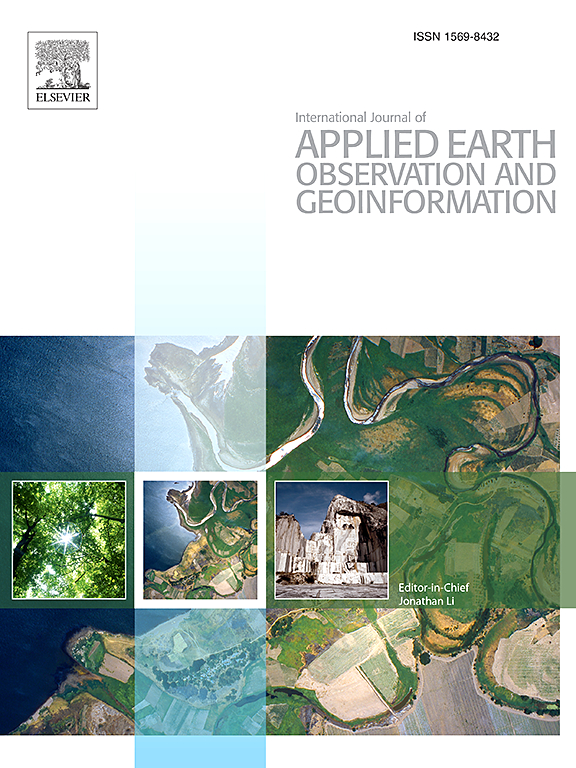BSG-WSL: BackScatter-guided weakly supervised learning for water mapping in SAR images
IF 7.6
Q1 REMOTE SENSING
International journal of applied earth observation and geoinformation : ITC journal
Pub Date : 2025-02-01
DOI:10.1016/j.jag.2025.104385
引用次数: 0
Abstract
Extracting and analyzing water resources in Synthetic Aperture Radar (SAR) images is crucial for flood management and environmental resource planning due to the ability to monitor ground all-weather and all-time. However, extracting water entirely from high-resolution SAR images in diverse scenarios is challenging due to variable water shapes, many low-intensity land covers similar to water, and scarce labels. In this article, a BackScatter-Guided Weakly Supervised Learning (BSG-WSL) framework based on image-level labels is proposed for water extraction with the requirement of high generalization and low labeling. In BSG-WSL, a BackScatter-Guided Network (BSGNet) is proposed, where the backscatter information of water is used to guide the feature extraction process, yielding precise Class Attention Maps (CAMs) of water. Then, a morphological pseudo-label optimization algorithm is designed to employ CAMs to generate high-quality pseudo-labels. Finally, a confidence cross-entropy loss is introduced to utilize pseudo-labels to train the extraction model and achieve precise water extraction in different scenarios. Experiments on three datasets of SAR images from the GF-3 and Sentinel-1B satellites verify that the proposed method achieves state-of-the-art performance compared to other weakly supervised methods based on image-level annotations.
求助全文
约1分钟内获得全文
求助全文
来源期刊

International journal of applied earth observation and geoinformation : ITC journal
Global and Planetary Change, Management, Monitoring, Policy and Law, Earth-Surface Processes, Computers in Earth Sciences
CiteScore
12.00
自引率
0.00%
发文量
0
审稿时长
77 days
期刊介绍:
The International Journal of Applied Earth Observation and Geoinformation publishes original papers that utilize earth observation data for natural resource and environmental inventory and management. These data primarily originate from remote sensing platforms, including satellites and aircraft, supplemented by surface and subsurface measurements. Addressing natural resources such as forests, agricultural land, soils, and water, as well as environmental concerns like biodiversity, land degradation, and hazards, the journal explores conceptual and data-driven approaches. It covers geoinformation themes like capturing, databasing, visualization, interpretation, data quality, and spatial uncertainty.
 求助内容:
求助内容: 应助结果提醒方式:
应助结果提醒方式:


